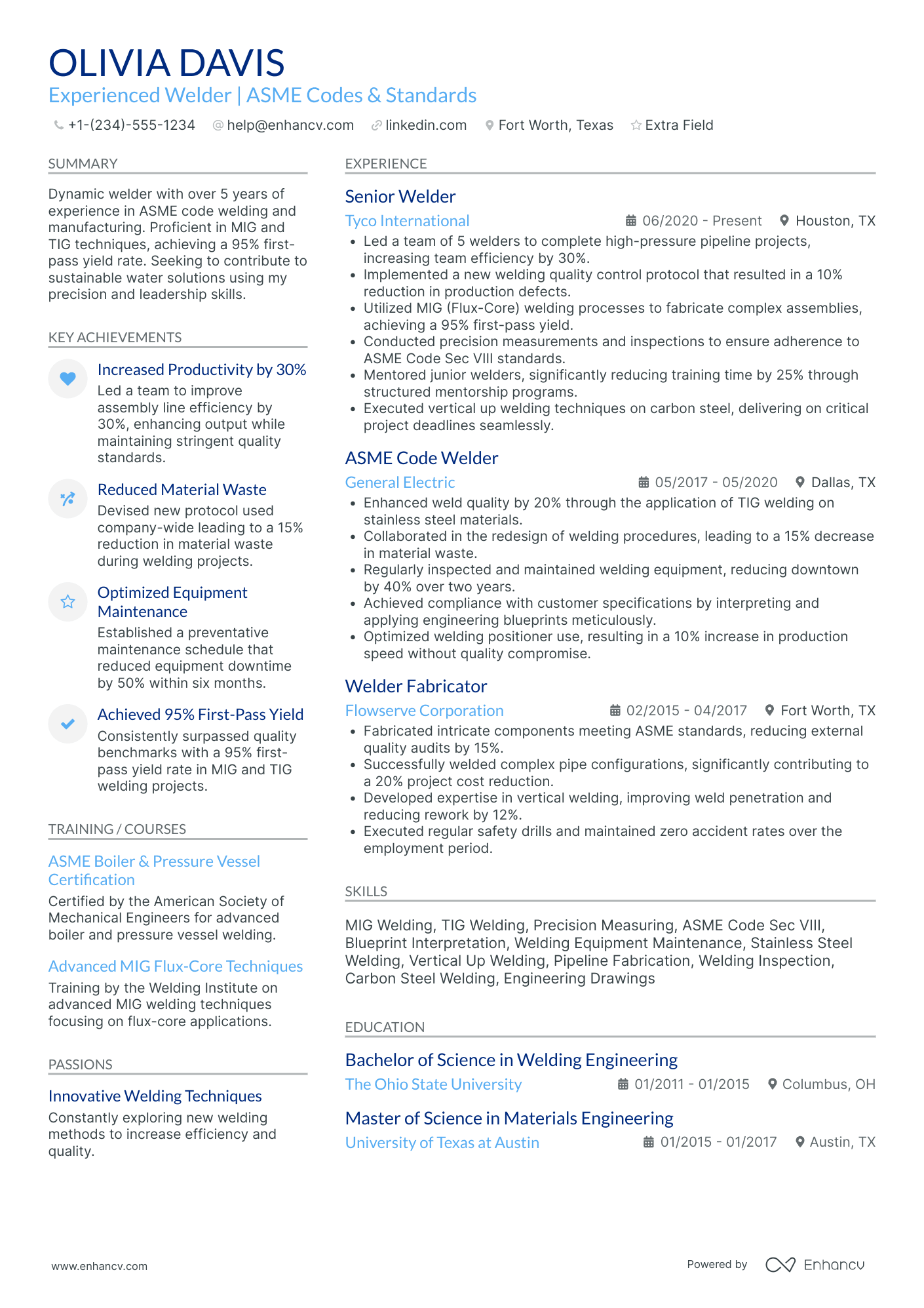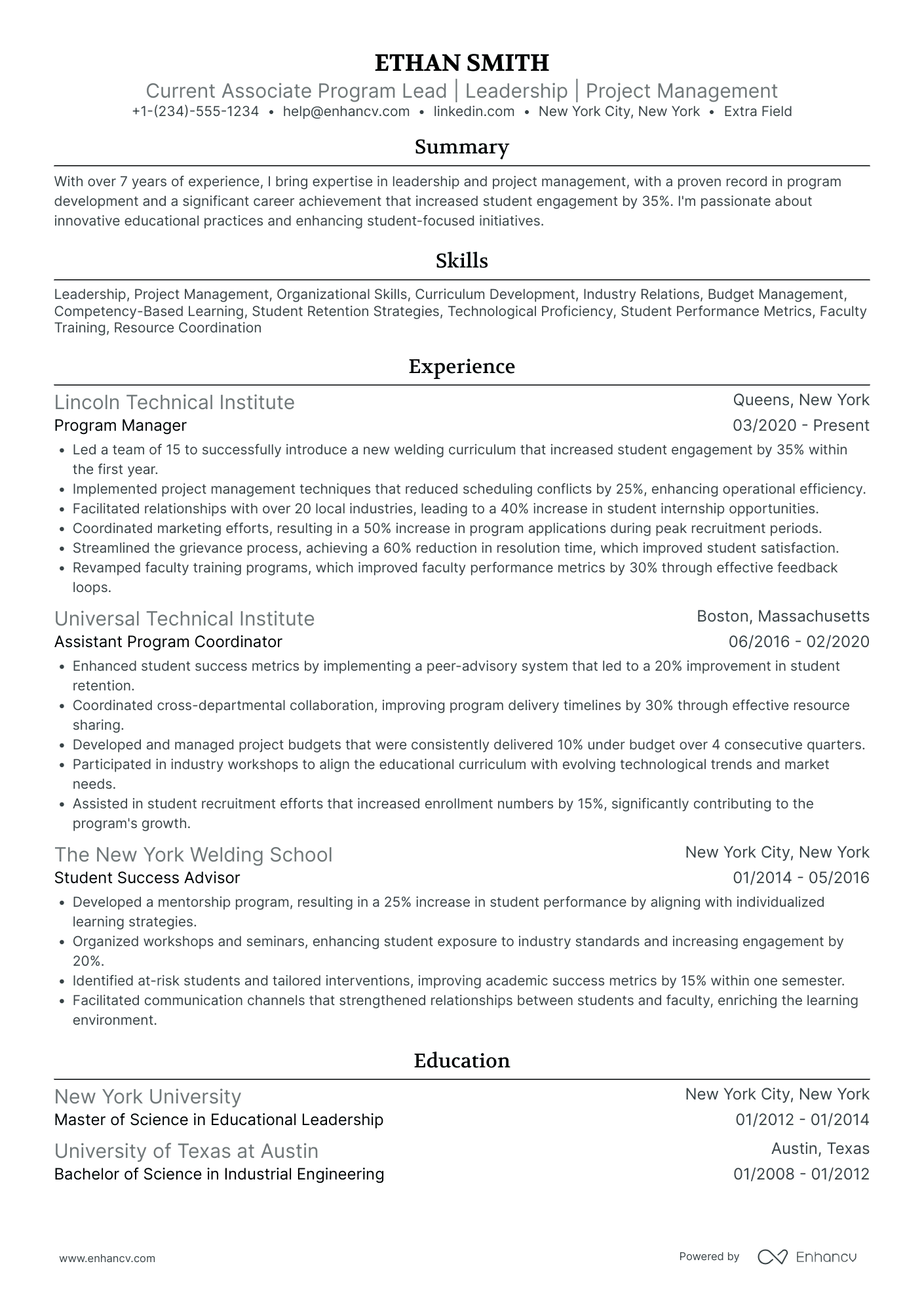A common difficulty welders encounter on their resumes is effectively showcasing their specialized technical skills. Our resume examples can help you highlight your proficiency in various welding techniques and certifications, ensuring you stand out to employers. Dive into the following examples to craft a compelling resume that highlights your strengths.
Welder resume examples
By Experience
By Role















































